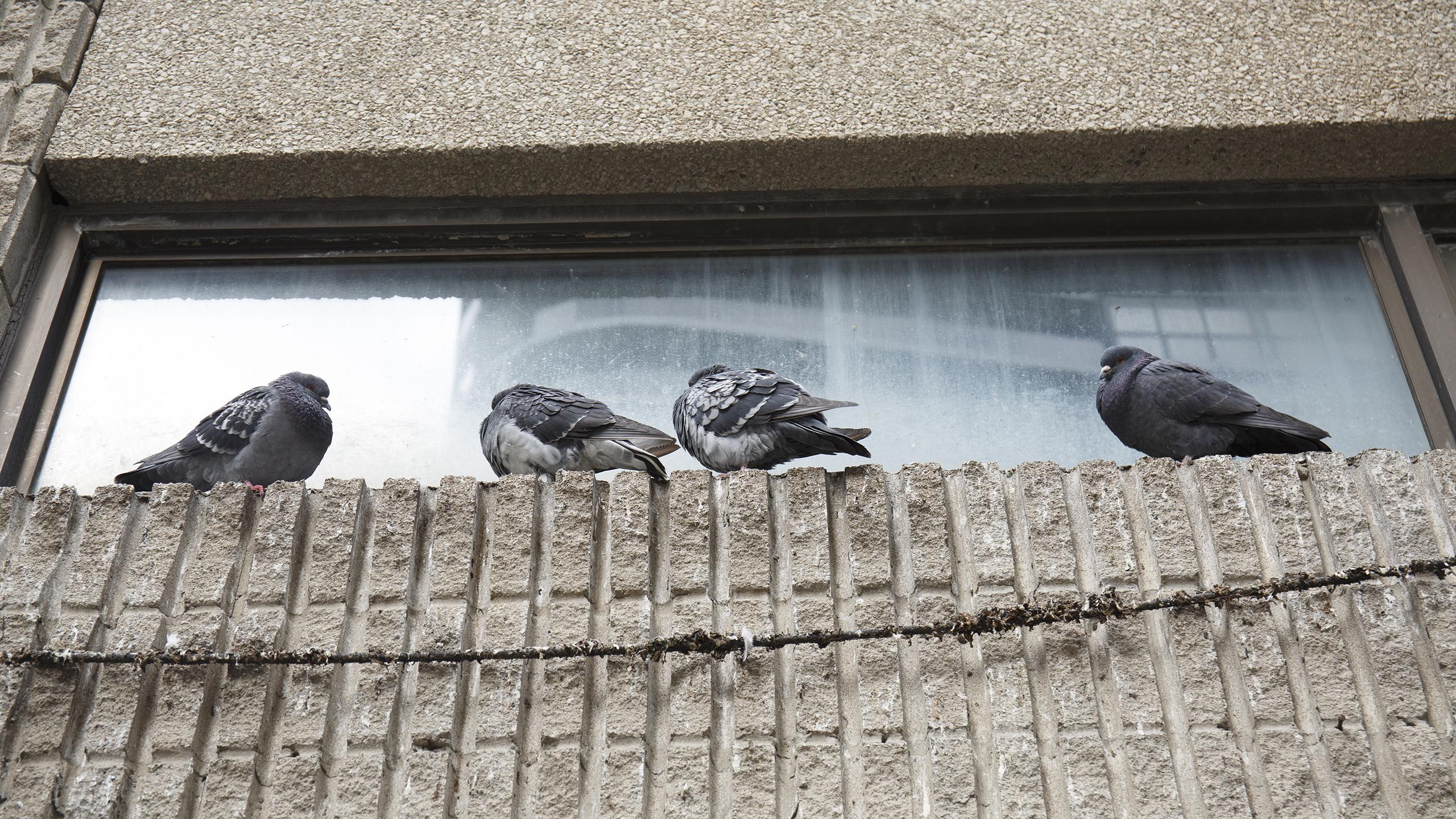By Zarmminaa Rehman
You have all seen pigeons roaming around our beloved Toronto Metropolitan University (TMU) campus, but have you ever stopped and wondered what goes on in their feathery little noggins? Without a doubt, these foul fowls seem to have been through a lot. Why do they always look like they’ve just returned from a brawl behind the Gould Street dumpsters?
As innocent as they might look, they always seem to be up in your business, obstructing your every path to classes, never flying higher than two metres off the ground and occupying the Sheldon and Tracy Levy Student Centre (SLC) concrete stairs. But is there a reason for their suddenly scheduled crew meetings in the school’s most crowded areas?
We shouldn’t analyze animals without the proper credentials—that would be wrong. Luckily, Maxine Kingfisher, a professor at Avian University who has a PhD in Ornithology (the specification of Zoology that focuses on birds) is willing to help us get to the bottom of whatever these pigeons seem to be cooking up.
Kingfisher decided that the best way to understand the feathery subjects is to immerse ourselves into their way of life and then break down their true intentions using previous research studies.
“They share a collective seven to nine brain cells”
Over a three-week period, Kingfisher and some students took turns sleeping, sitting and eating with the pigeons. They recorded their findings and then gathered together last week to dissect and summarize their discoveries.
Like body language analysts, Kingfisher and others picked apart the various poses and positions the pigeons can be found in.
“Just looking doesn’t give you the full story of these magnificent creatures,” claimed Kingfisher. “Just from their build, you [can] see they have a growing craving and drive for justice.”
Given the vast number of pigeons available to study, it was easier to group them into categories to better predict their thoughts, said Kingfisher.
Not all of the pigeons are the same, they fall into four categories: there are type-one alpha trait-exhibiting pigeons, type-two beta inclined pigeons, type-three really dull pigeons and then there are the perpetually confused ones—type-four pigeons—that are so inept, we leave them be.
“Type-four pigeons are those ones with multiple spots or patches of white on them, you know the ones that seem like they would be main characters? Well, behind those eyes are no thoughts or completely useless ones,“ said Kingfisher.
Similar to type-four pigeons, type-three pigeons lack quite a lot.
“These guys are harmless as far as I’m concerned because they share a collective seven to nine brain cells.”
It was no surprise that Kingfisher deduced from her findings that there is evidence of dubious planning going on behind the scenes. The ongoing suspicion amongst the researchers is that despite the alphas being more towering and sturdy, there might be a Trojan Horse-type situation afoot, in which the short betas are the real ringleaders.
Kingfisher says findings support the idea that the only real pigeons we should worry about are the betas.
“Alphas are only thinking about getting fed and being tough. While they have some kind of brawn, betas surpass them in terms of brilliance, savviness and of course, skill. They can fly two and a half metres in the air.”
She added that many people don’t know that betas are actually few and far between. They are also “built different” and give off an “easy-to-catch” vibe because of their robust build and a lustrous, dual-gray toned feather composition, Kingfisher explained. They have very distinct mulberry purple ombres around their necks and are referred to—affectionately—as “pretty bois,” she added.
The TMU Campus Bird Society (CBS) has been discussing the likelihood of an alliance of pigeons and other campus critters, like rats.
Changes on campus, such as habitat-friendly potholes being filled and pristine resting spots like the sought-after SLC steps being taken over by students, had very distressing impacts on the pigeons. This time, the betas are stepping up and preparing—the only question now is, for what?










Leave a Reply